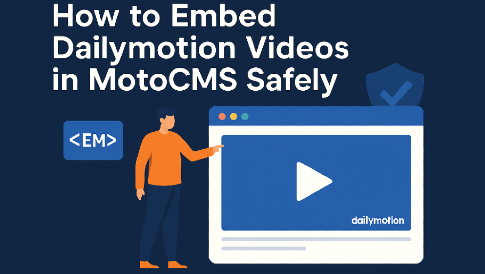How to Design a Website for Gamers
At first glance, it might not seem like it, but many websites are designed for gamers. There once was a time when playing games online meant opening a browser and visiting something like Club Penguin or Miniclip rather than downloading a game from Steam. That’s less common nowadays than console or PC gaming, but the surrounding web gaming world is still there. You have a site full of reviews, walkthroughs, lore, and more. And they’re popular. Contrary to stubborn popular belief, even in 2023, the gamer population is diverse, spanning genders, races, and identities. So, designing a website for gamers is not a job that requires a one-size fits all approach, nor does it mean loading a site with lots of neon and calling it a day.
If you want to make a website that appeals to gamers, it starts with knowing that there are many different gamers. Once you have that nailed down, keep reading to discover the next steps to making a gaming website that stands out.
Website for Gamers – Go That Extra Step with UX
One stereotype that isn’t going away anytime soon is gamers’ love of technology. They’re into their crypto and blockchain, they like checking their Smooth Love Potion price, they like tinkering with their PCs and upgrading their res, and they appreciate the high performance. How often have you seen some marketing piece for a new game that focuses on how beautiful or realistic the game looks?
This all means that if you are to create a gaming website, not only does it have to look good, but it needs to perform well. These people will not tolerate waiting five seconds for a loading screen or shrug their shoulders at a glitch. They will bounce, and your gaming website will be no good to anyone.
Not only will you need to keep testing your website to make sure it functions well, but you’ll have to make sure it functions well on mobile and even VR. You might want to look into online features that would appeal to gamers. For example, you can add scheduling tools for any live-stream gaming events you’re a part of or add cryptocurrency payment options.
Mix Both Aesthetics and UX
A way to stand out aesthetically and upgrade user experience is to look into more dynamic website features. There is quite a bit of experimentation going on in website design. The running theme for the look is the 80s, which suits gaming very well since it evokes memories of the arcade and the first games.
But interactions are also a bit part of 2023 trends, like icons moving around the screen as you scroll, products or blog posts expanding as you browse, and an animated narrative emerging as your mouse moves around the screen.
Website for Gamers – Think About Your Demographic
If you sit and conjure an image of your typical Stardew Valley gamer, they will likely turn out much different than your typical Call of Duty gamer or World of Warcraft gamer. Even that is a sweeping generalization based on stereotypes and who these game developers likely target.
As the designer of a gaming website, you’ll need to think along the same lines as these developers. The first step to creating any product, even a website, is to consider your demographic. Who are you targeting?
Maybe you’re just targeting gamers in general, or you want to be that one-stop for everything gaming, like IGN, and desire to be approached by every type of gamer. Maybe you’d be better off going more niche, like creating a website around first-person shooters, JRPG, or cozy games. This, in turn, will allow you to target a more niche but more loyal community and give you a blueprint of aesthetics to work with.
If you’ve got a specific niche in your sights, it’s worth looking into what the competition is doing to appeal to the demographic you’re also aiming to win over. For example, if you want to set up a marketplace for digital in-game assets, such as weapon skins in Counter-Strike, then exploring how frontrunners like Clash.gg do things will be informative.
Do Something Different with Your Aesthetics
The biggest gaming websites have no aesthetic because they’re looking to appeal to all. Think about IGN, which has a white background and red lettering. Groundbreaking. TheGamer is similarly simple, with a black banner and orange lettering, but it expands into film and TV fanbases for an even bigger demographic of fans.
This is one approach, but that doesn’t mean you can’t get creative. You can go the Nike route and boil gaming down to universal concepts, like Nike, victory, competition, challenge, etc., and create logos, names, and color palettes from these concepts, like the goddess of victory, Nike. TheGamer, for example, has a logo that evokes the idea of a console controller pad in its diamond formation.
As mentioned, if you want to go more niche with genres, they give you a good starting point for aesthetics. Battle royale games like Fortnite and Apex Legends feature wild characters and bright colors, cozy games like Firewalk and Stardew Valley feature more pleasing but equally bright colors, and fantasy, horror, or army games can be very dark, gritty, and mysterious.




Leave a Reply